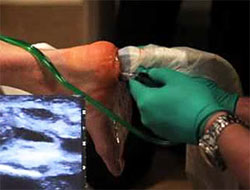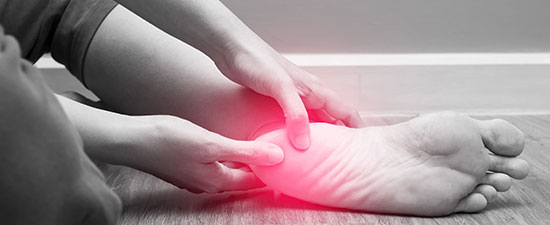- Home
- Advanced Treatments
- Tenex
Tenex Procedure
- Published 11/27/2018
- Last Reviewed 3/7/2024

If you’re one of 8 million Americans experiencing pain and discomfort in the Achilles tendon and/or plantar fascia, the Tenex Health Procedure, a minimally invasive treatment for soft tissue damage, may help.
Developed with Mayo Clinic, Tenex Health created a new conservative tendon procedure to help remove damaged tissue and leave behind healthy tissue, reducing tendon pain, aiding healing, and reducing the likelihood of more invasive treatment in the future.
- What can cause fascia discomfort or tendon pain?
- How are Achilles tendinopathy and plantar fasciitis traditionally treated?
- What is the Tenex procedure?
- The TenJet System: a new and better alternative to Tenex?
- What is the TenJet procedure?
- Why Turn to UFAI for your TenJet or Tenex procedure
- Tenex FAQs
- What is the success rate of Tenex? TenJet?
- Is Tenex better than PRP?
- What is the difference between Tenex and TenJet?
-
Foot and Ankle Surgeon at University Foot and Ankle Institute
Dr. Justin Franson, DPM, is a Board Certified Podiatric Foot and Ankle Specialist and Diplomate of the American Board of Podiatric Surgery. He attended the School College of Podiatric Medicine in Chicago, graduating in 2001. Dr. Franson then accepted a three-year residency program at the Greater Los Angeles VA and UCLA County Hospital.
Dr. Franson specializes in several areas including total ankle replacement and sports medicine. Treating athletes and weekend warriors like himself brings him a lot of joy. Dr. Franson keeps active with running marathons, triathlons, hiking, basketball, and golf.
Read more about Tenex on Our Blog
 I am 4 weeks post surgery now and just got my cast off today. Dr. Franson is the BEST foot specialist I have ever been to. He i...Kathleen C.
I am 4 weeks post surgery now and just got my cast off today. Dr. Franson is the BEST foot specialist I have ever been to. He i...Kathleen C. Please provide handicap parkingBarry S.
Please provide handicap parkingBarry S. Dr. Ambibola Johnson is awesome!Laurie S.
Dr. Ambibola Johnson is awesome!Laurie S. I appreciate the care and timeliness of all my appointments I’ve had at UFAI. Gray, Lydia and the staff all are wonderful. Lydi...Edelmira G.
I appreciate the care and timeliness of all my appointments I’ve had at UFAI. Gray, Lydia and the staff all are wonderful. Lydi...Edelmira G. Great experience with Dr. Franson. He's knowledgeable, personable, and going straight to the most expensive surgical option isn...Carol M.
Great experience with Dr. Franson. He's knowledgeable, personable, and going straight to the most expensive surgical option isn...Carol M. I have worked with several of the Doctors at UFAI. Not only are they knowledgeable and professional, they are also great listen...Andrea T.
I have worked with several of the Doctors at UFAI. Not only are they knowledgeable and professional, they are also great listen...Andrea T. Very greatfull for the doctor and stuffJesus M.
Very greatfull for the doctor and stuffJesus M. Doctor was very caringBrigitte S.
Doctor was very caringBrigitte S. Everyone is very nice and efficient-
Everyone is very nice and efficient-
Especially Dr Kelman. He takes very good care of me!!Claudia K. Great costumer service.
Great costumer service.
Prompt and efficientDean W. No . I’m pleased with the care .Michael P.
No . I’m pleased with the care .Michael P. Appreciate the professionalism and expertise, as well as the caring.Stella G.
Appreciate the professionalism and expertise, as well as the caring.Stella G.

